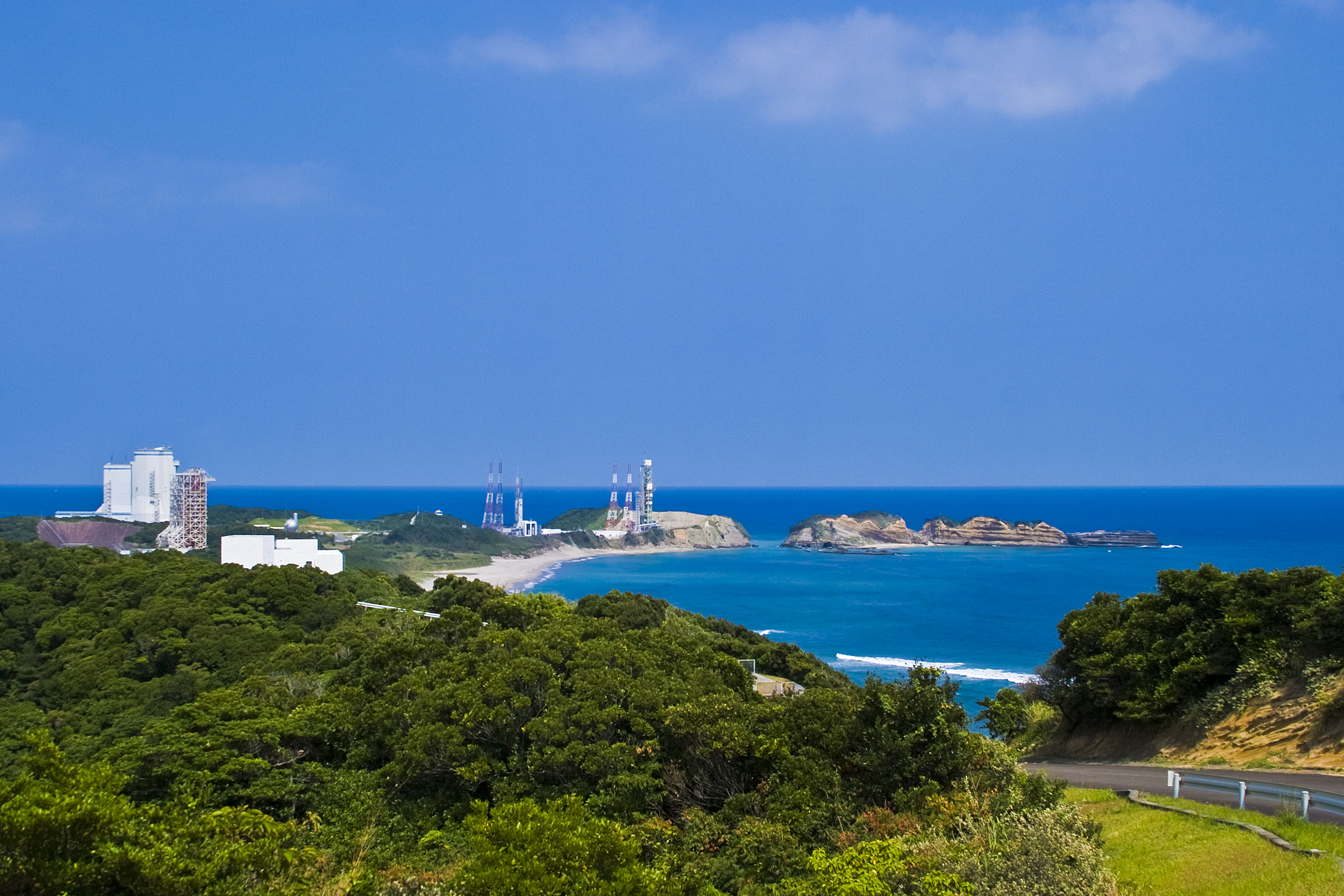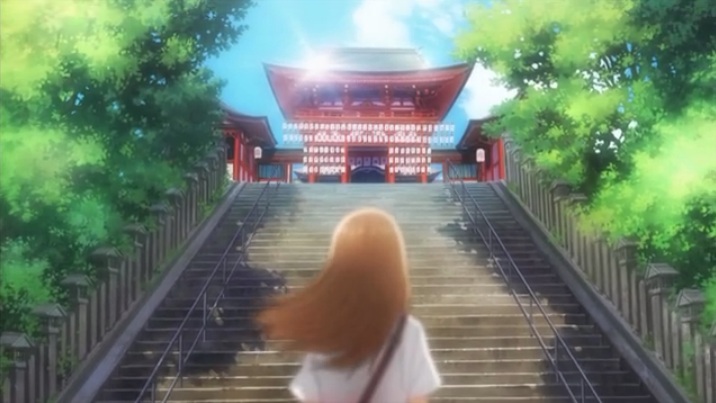When watching an anime, it’s hard not to be mesmerised by the beauty of the settings and backdrop. It’s no surprise that some of these gorgeous works of art can inspire us to visit Japan, or even buy products featured in them. From the busy Tokyo streets to traditional heritage sites, here are some of the real life anime locations that have inspired the gorgeous settings we see in some of our favourite anime titles.
“5 Centimeters Per Second” | Tanegashima Space Center, Kagoshima Prefecture


Before there was Your Name, Makoto Shinkai released the equally poignant 5 Centimeters Per Second (2007) which tells a tale of two high schoolmates experiencing yearning and lost love. When Takaki moves to Kagoshima – and away from his first love, Akari – he catches the eye of fellow classmate, Kanae. But as she cries over her botched confession, a rocket is launched from the Taneshigama Space Center in the distance, leaving its exhaust trail in the sky. Kanae realises that the rocket represents Takaki’s longing for something in the distance.
Surrounded by the ocean and sandy beaches, Taneshigama Space Center is arguably the most beautiful rocket launch site in the world. It’s also Japan’s largest rocket launch complex, playing a pivotal role for satellite launches in the country – definitely one of the most unique anime locations. Located along the southeast coast of Tanegashima, its on-site facilities include a launch site as well as spacecraft test and assembly buildings. Admission and tour of the facility is free, but advanced reservation is required. At the space museum, you can learn about space exploration and even purchase space-related goods, like astronaut’s curry!
“Spirited Away” | Sado Island, Niigata Prefecture


Fans of Studio Ghibli’s Spirited Away will immediately recognise the taraibune in a heartbeat! The tub-shaped wooden boat was used by Mei to transport Chihiro from the bathhouse to the partially-submerged train station. While it looks like an unwieldy mode of transport – especially with the way the oar is manipulated – it’s actually more easily maneuvered than a traditional boat. First used in the Meiji era (1868 to 1912), they proved to be very durable for fishing in very narrow and winding coves in the Ogi area of Sado Island.
Originally used by the renowned Ama divers for catching abalone and mollusks in the rocky coastal areas, you too can experience riding in a taraibune when visiting Sado Island. It’s one of the most iconic anime locations. The tradition of piloting these tubs is kept alive by elderly ladies who shuttle visitors around and giggle at their attempt to maneuvre the tricky craft. The tub can hold two passengers, piloted by a one steerer. A guided boat ride lasts about 7-8 minutes (costs ¥500), and a popular place to take off is near Ogi Port in Ogi Town.
“Golden Kamuy” | Lake Akan, Hokkaido


The popular anime Golden Kamuy – a historical fiction set in the late Meiji Era (1868-1912) in Hokkaido – has a lot going for it: action-packed treasure hunts, comedy, beautiful art, and representation of Japan’s Indigenous people, Ainu. In the story, Saichi Sugimoto, an infamous veteran of the Russo-Japanese War, teams up with a young Ainu huntress by the name of Asirpa to hunt for gold that was stolen from the Ainu people.
The references for the buildings seen in the anime can be found in Historical Village of Hokkaido (entry ¥1,200), an open-air museum housing Meiji and Taisho era buildings (1868 to 1926) which have been relocated from all over Hokkaido and restored on site. Check out the Yamamoto Barber Shop where Hijikata and Ogata had their hair cut and the Sanmasu Kawamoto Soba shop where Sugimoto was caught by the Nikaidou twins (try the herring soba noodles, a signature dish popularised by the characters in the anime). Other familiar buildings include the Otaru Shinbun building and the Hirose Photo Studio – talk about the most comprehensive setting for anime locations!
“Gin no Saji (Silver Spoon)” | Obihiro, Hokkaido


The town of Obihiro is the setting of Gin no Saji, in which Yugo Hachiken is a city boy who learns the hard way about the struggles of rural farm life at the Oezo Agricultural High School. Normally a straight-A type of student, he realises his brains are no match for his classmates, all of whom were born and raised in farms. The anime is a brilliant portrayal of rural life thanks to its slice-of-life agricultural comedy.
The anime has a huge affiliation with equestrian sports, especially Banei horse racing, as Hachiken and Aki Mikage are members of the school’s Equestrian Club. Banei racing is unique to the Tokachi area of Hokkaido – it’s the only horse racing that involves horses pulling carts, and in the anime, Aki’s family is involved in Banei. You can witness these races at the Banei Tokachi Horse Race Track, the world’s only cart-hauling horse-racing ground. The horse theme continues at Obihiro Shrine – you can make wishes on a horse-shaped ema plaque, and hang them on the temple grounds.
“Love Live! School Idol Project” | Kanda & Akihabara, Tokyo


Tokyo is the setting for the popular anime, Love Live! School Idol Project which is about a group of students from Otonokizaka High School who form an idol band to save their institution from closing down due to low student numbers. Honoka Kousaka and her childhood friends Umi and Kotori form μ’s (pronounced “muse”) in order to compete in the Love Live competition to boost the popularity of their school.
Check out where the girls worked their part-time jobs, like Kanda Shrine and Cure Maid Café, where Kotori was the “Legendary Maid Minalinsky.” Step on the very staircase of Myojin Otokozaka where the girls did a lot of their training, and check out their rival high school, UTX High School, which is based on the Akihabara UDX building.
“Chihayafuru” | Omi Shrine, Shiga Prefecture


Chihayafuru is an anime about karuta, a competitive Japanese card game that’s physically and mentally demanding, comprising poems from the classic Japanese anthology of Hundred Poets. Chihaya Ayase is a strong-willed high school girl who is a karuta freak with her sights set on the national championship at Omi Shrine.
Frequently featured in the anime is the vermillion Omi Shrine in Otsu City with its striking two-storied gate. More than just a shrine for praying, Omi Shrine is where karuta was created – you can see karuta cards prominently on display at the shrine. Any serious player of karuta aspires to come to the Omi Kangakukan, located on the shrine’s premises, to compete in a tournament that decides the best player in the country. The shrine usually gets crowded during these tournaments. You can get a taste for what the game is like by wearing a hakama and a ceremonial kimono.
With record numbers of Singaporeans visiting Japan recently, why not head to some of these unique anime locations instead of the usual tourist (aka crowded) sites?











